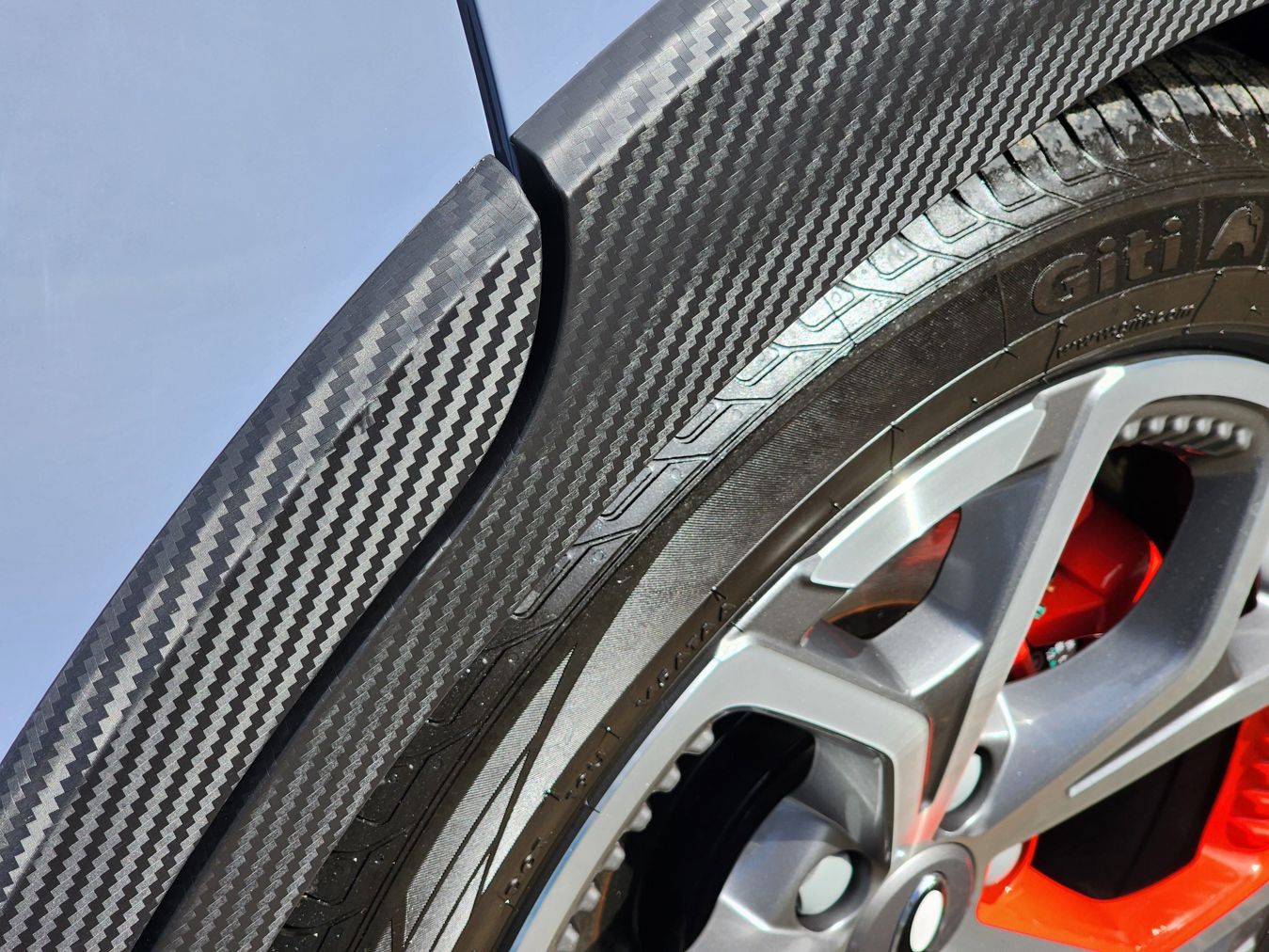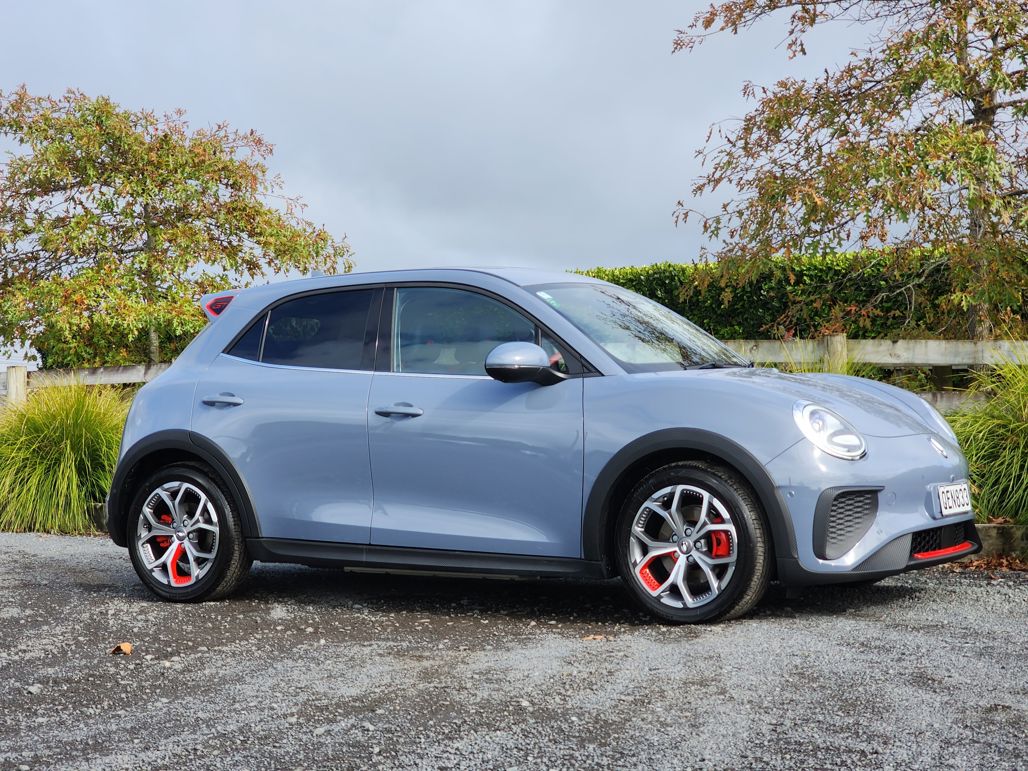You might remember the GWM Ora from the heady days of New Zealand’s Clean Car Discount, when it engaged in a price war with the MG4 for title of the country’s least expensive new battery electric vehicle (BEV). It won, then lost, then won again with a $5k price drop.

It’s still on top – or at the bottom if you prefer – right now, because that price-reduction carries on until the end of June. The Ora Standard Range starts at $42,990, undercutting the MG4 Excite by a solid $4k.
But that’s not why we’re here. Meet the top Ora GT model: Grand Tourer by name perhaps, although one for “stylish and chic city drivers” by nature, according to its maker.
If you’ve just joined us, the Ora brand is part of the GWM group (formerly Great Wall Motors) and serves as its small-EV division. It sits under Haval (crossover SUVs of all sizes) and Tank (heavy-duty 4x4s with luxury garnish), with Cannon utes off to the side.

So yes, the Ora is very much a urban EV in the same mould as the MG4, BYD’s Dolphin and Atto 3, and even the just-launched Omoda E5.
Grand Tourer by name, but one for “stylish and chic city drivers” by nature, according to its maker.
Given the opening price of $43k for the Ora, you might need to take a moment to get your head around spending another $16k for the GT, which has the same basic body shape and same 126kW/250Nm electric motor.

The gulf is partly explained by the price cut for the Standard and Extended Range models, and partly by battery size and equipment levels.
The GT looks decidedly different, with bespoke GT bumpers, special wheels and a lot of quite strange red detailing.
Everything from the Extended Range upwards gets a larger 64kWh battery, which raises the WLTP range from 310km to at least 400km (more about the “at least” in a minute). The Ultra ($55,990) raises the game again with the likes of automatic parking with front sensors (rears are standard across the range), power/fold mirrors, panoramic glass roof, power tailgate and power/memory/vented/heated/massage front seats.

Nice, although given the Extended Range rides on the same-size 18-inch wheels and still gets the full suite of infotainment and active feature features, it’s a challenging upsell from the Extended’s special price of $47,990 to the non-special $55,990 for the Ultra.
It's fun to look at, it's fun to be in and it is fun to drive… in its own way.
If you’re able to spend the extra money, the GT looks like a better bet. For a start it looks decidedly different, with bespoke GT front and rear bumpers, special wheels (same 18in size though) and a lot of quite strange red detailing. Which we rather like in an ironic way, but if you don’t you could blend it in more by choosing the Mars Red exterior paint colour.

To the Ultra equipment, the GT adds a special steering wheel and red interior stitching. And it tries to justify its GT credentials with an additional Individual drive mode and launch control function – plus one extra piece of safety tech, Front Cross Traffic Alert with braking.
But like we said, same battery and power output as lesser Oras and in fact the less aerodynamic body kit means the GT has 20km less range than other 63kWh Oras, so it’s officially the slowest to 100km/h in the lineup. Only by 0.1sec… but official is official.

So no, the Ora GT is not sporty in the warm-hatch sense. But it is fun to look at, it is fun to be in and it is fun to drive… in its own way.
The ride is firm for a city car (no firmer than other Oras, though), but it does endow the car with a sense of dynamic solidity in the corners. The steering’s not bad, either.

It’s brisk off the line in an EV way, although the 0-100km/h time of 8.5sec is only on a par with other mainstream family EVs.
In a larger context, there are two things that put a cap on its sportier aspirations. The first is its front-drive configuration, which makes it noticeably less composed than the RWD MG4. Given there’s no packaging advantage in an EV with FWD, a switch to RWD (hey, Polestar did it) would work wonders.

The second issue is a dire lack of traction in the wet. That’s partly tyre choice and partly electronics that don’t seem to be able to reign in instant EV torque even under part-throttle: on a rainy day the front wheels can spin to the extent that the car wants to go into terminal understeer. Worse, slippery surfaces seem to confuse the adaptive cruise in corners, with graunching and braking at unexpected times… in unexpected ways.
On the plus side, the Ora’s overly active driver assists seem to have settled from the last time we drove one. Maybe we’re just getting used to them, but maybe there have been factory software updates along the way – something Chinese brands are very good at and very quick to issue.

The car’s retro exterior styling flourishes continue on the inside. It’s EV-minimalist in places, but with chrome switchgear and little grilles adorning the ventilation outlets.
You do have to get to grips with the twist-and-go rotary gear selector, which can’t be hurried, and the slighty murky operating system, which presents a lot of information but arguably puts too much on each screen. It’s a lot to take in (and the graphics are very small). But the wireless phone projection works well and you can shortcut to certain functions (like climate control) with the Mini-like centre-console toggle switches.
At 4.3m in length the Ora has a footprint slightly bigger than your average supermini, but the long wheelbase endows it with impressive interior space. It’s a totally capable four-up cruiser, the only real issue being the modest 228-litre boot: fine for a city car (which this is), it just doesn’t do the interior space justice.
The Ora has its foibles for sure, but it’s also a very… happy car. At its special price of $43k we still reckon the entry Standard Range is the one to go for, because you’re getting so much for your money. But if you want to stand out a bit more and embrace the tongue-in-cheek aura of the Ora, the GT certainly does the trick.
BATTERY: 63kWh with single electric motor POWER: 126kW/250Nm GEARBOX: Single-speed, FWD 0-100KM/H: 8.5sec RANGE: 400km (WLTP), maximum charge rate 80kW PRICE: $58,990
How much is the GWM Ora GT?
It's top of the Ora range at $58,990: $3k more than the more luxury-oriented Ultra.
What are the key statistics for the GWM Ora GT?
Despite the GT name, the powertrain is exactly the same as other long-range Oras: 64kWh battery with 126kW/250Nm motor. Single-speed gearbox (as is the EV norm), front-drive. Maximum charge rate is 80kW.
Is the GWM Ora GT efficient?
We were not far off that claimed 400km in day-to-day use, although that was mostly city driving; but then it is a city car. The 400km range is actually a little less than the Extended Range/Ultra, thanks to that body kit.
Is the GWM Ora GT good to drive?
The powertrain and platform are fundamentally well-sorted, so yes. The ride's quite firm (as it is on other Oras), but it corners confidently. But weren't so impressed with the performance in the wet: the front wheels spin too readily and the traction control doesn't seem able to contain them.
Is the GWM Ora GT practical?
The Ora presents a bit of an optical illusion. The retro styling makes it look small in isolation and it is only 4.3m long. But it's SUV-tall and rides on a very long 2650mm wheelbase, so you get interior space equivalent to a mid-sized car (or more). What's not all that big is the boot: just 228 litres.
What do we like about the GWM Ora GT?
It looks cute as a button and doesn't seem to take itself too seriously. It's decent to drive (in the dry) and there's a pleasing sense of quality in the cabin, which is also quite stylish. Yes it's expensive, but the GT is loaded with luxury-car equipment (massage seats, even) and active safety technology.
What don’t we like about the GWM Ora GT?
Said safety tech is still a bit intrusive, but that's not unusual for modern cars. It doesn't have any more power than the standard Ora - surely it wouldn't be hard to upgrade the electric motor a little? There's too little traction in the wet.
What kind of person would the GWM Ora GT suit?
Someone who wants a city EV, wants to stand out from the crowd a bit - and is happy to pay a bit of a premium to achieve it.















